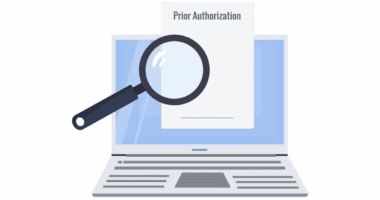The Presidential Commission to Make America Healthy Again recently released a report (the MAHA Report*) on the scope and potential contributing causes of childhood chronic diseases, including allergy and asthma. According to the MAHA Report, more than 40% of U.S. children (ages 0-17) have at least one chronic health issue, including asthma, allergies, obesity, autoimmune diseases, and behavioral disorders. While estimates vary depending on the specific condition, all available data point to a consistent and steady rise in chronic illnesses over time. With respect to allergies, the MAHA Report notes that more than 1 in 4 American children now suffer from some form of allergy, including seasonal allergies and food allergies. It cites a notable increase in eczema and skin allergies – from 7.4% of children between 1997 and 1999 to 12.7% between 2016 and 2018. Additionally, childhood food allergy prevalence rose by 88% between 1997 and 2018.
The MAHA Report also references the EPA’s America’s Children and the Environment initiative, which has tracked various indicators of children’s environmental health since 2000, including asthma. Although the MAHA Report acknowledges that many environmental exposures have improved over time –such as a more than 90% reduction in lead exposure since the 1970s – it argues that overall childhood health has continued to decline. Of particular concern is the potential link between chronic disease and cumulative environmental risks, which the MAHA Report suggests remains poorly understood.
Additionally, the MAHA Report discusses a growing reliance on prescription medications among children. It states that 1 in 5 U.S. children have taken at least one prescription drug in the past month, and that 27% of adolescents are taking one or more medications daily. According to the MAHA Report, asthma drug prescriptions increased by 30% between 1999 and 2008. The MAHA Report claims that an estimated 25-40% of mild cases are overprescribed. In support of this proposition, the MAHA Report cites a 2021 report on oral corticosteroids.
The College respectfully disagrees with the report’s finding that asthma medications are overprescribed. In fact, the best evidence suggests that asthma medications are underprescribed. Underprescribed asthma medications can vary based on age, symptoms, severity, and side effects.1 Some monoclonal antibodies have been approved for severe asthma treatment, but they can be costly.2 It’s important to work closely with a health care provider to track symptoms and adjust medications as needed.
Further, the report does not acknowledge that oral corticosteroids represent only a subset of medications prescribed for asthma. For instance, the MAHA Report does not address quick-relief medications such as inhalers and anticholinergics.3
Asthma is typically diagnosed through a medical exam and a test that measures airflow in and out of the lungs. Diagnosing children can be challenging, especially when they are very young. They may not be able to complete the airflow test or describe how they feel. This makes it especially important for parents, other family members and caregivers to know the signs of asthma.
It’s very important that children with asthma receive proper treatment. If asthma isn’t well-controlled, children may need to go to the emergency department or be hospitalized. Asthma medications are very safe and effective when used as directed. A child’s treatment will depend on the severity and frequency of their symptoms. Most people with asthma need two kinds of treatment: quick-relief medicines (bronchodilators) and long-term control medicines. Quick-relief medications are taken at the first sign of asthma symptoms for immediate relief. They include short-acting inhaled beta2-agonists (inhalers) and anticholinergics. Long-term control medications are taken every day to prevent symptoms and asthma attacks. They include inhaled corticosteroids, antileukotrienes or leukotriene modifiers, and long-acting inhaled beta2-agonists.
*More than 500 reports were cited in the MAHA report, including some studies that don’t exist. A “corrected” version has been posted. “Minor citation and formatting errors have been corrected, but the substance of the MAHA report remains the same – a historic and transformative assessment by the federal government to understand the chronic disease epidemic afflicting our nation’s children,” HHS press secretary Emily Hilliard said in a statement.4
Of specific interest to allergists, there was no record of a study with the title “Overprescribing of Oral Corticosteroids for Children With Asthma.” The journal Pediatrics had published a study called “Oral Corticosteroid Prescribing for Children With Asthma in a Medicaid Managed Care Program” in 2017. This study had the same first author as was listed in the MAHA report but different co-authors.
The Advocacy Council – ADVOCATING FOR ALLERGISTS AND THEIR PATIENTS.
1 Asthma medications: Know your options
2 Lower Use of Biologics for the Treatment of Asthma in Publicly Insured Individuals (Journal of Allergy and Clinical Immunology in Practice)
3 Asthma Medications (MedicineNet)




